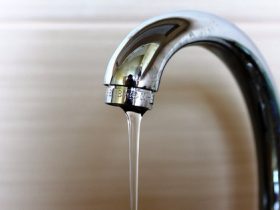Just how do you actually feel in regards to 9 Reasons for Low Water Pressure in Your House?

Low water pressure in your house can be a discouraging issue, affecting everything from showering to washing recipes. If you're experiencing weak water flow, there are several possible reasons and options to explore. In this guide, we'll discuss typical factors for low water pressure and sensible steps to deal with the concern effectively.
Introduction to Low Water Pressure
Low water pressure happens when the flow of water from your faucets, showers, and various other components is weak than common. This can make daily tasks much more difficult and less effective. Comprehending the root causes of low tide pressure is crucial to locating the appropriate remedy.
Typical Root Causes Of Low Water Pressure
Pipe Obstructions
Over time, pipes can become clogged with natural resource, debris, or debris, restricting the circulation of water. This is a typical issue in older homes with galvanized steel pipes.
Deterioration
Deterioration within pipelines can bring about leaks and decreased water pressure. Rust buildup can tighten water circulation, especially in maturing plumbing systems.
Faulty Pressure Regulators
Stress regulatory authorities are responsible for preserving consistent water stress in your house. If they malfunction, it can result in low tide stress or uneven flow throughout your home.
Metropolitan Supply Of Water Issues
Occasionally, the problem lies outside your home. Community water system concerns, such as main line leakages or upkeep job, can briefly minimize water stress in your area.
Exactly How to Identify Low Water Pressure
Checking Taps and Components
Start by testing the water stress at various faucets and fixtures throughout your home. If the concern is separated to certain areas, it may indicate local issues.
Examining Pipelines
Check visible pipelines for indications of leaks, corrosion, or clogs. Focus on any uncommon audios, such as banging or rattling pipes, which might indicate issues within the plumbing system.
Consulting with a Plumber
If you're incapable to determine the reason for low water stress, take into consideration employing a specialist plumber to carry out a comprehensive examination. They can identify underlying problems and advise suitable solutions.
DIY Solutions to Take Care Of Low Tide Stress
Cleaning Aerators and Showerheads
Mineral deposits can build up in aerators and showerheads, minimizing water circulation. Get rid of and cleanse these parts routinely to improve water pressure.
Flushing Water Heater
Debris build-up in the water heater can limit circulation and minimize effectiveness. Flushing the container occasionally assists remove debris and maintain optimum efficiency.
Checking Stress Regulator
Ensure that the stress regulator is working appropriately. Changing or replacing the regulatory authority can help recover appropriate water pressure throughout your home.
Clearing Up Clogs in Pipes
For small blockages, attempt utilizing a plumbing snake or chemical drainpipe cleaner to clear obstructions in pipes. Be cautious when making use of chemicals and adhere to security guidelines.
When to Call a Professional Plumber
If DIY efforts stop working to fix the concern or if you presume substantial plumbing problems, it's best to seek help from a qualified plumber. They have the know-how and tools to address complex issues safely and efficiently.
Preventive Measures to Maintain Water Stress
Normal Upkeep
Arrange regular maintenance for your plumbing system to prevent concerns such as deterioration, leakages, and clogs. Addressing small problems early can aid stay clear of more substantial fixings in the future.
Installing a Pressure Booster
Consider setting up a pressure booster pump to improve water pressure in locations with consistently low circulation. This can be specifically valuable for multi-story homes or properties with high-demand fixtures.
Monitoring Water Use
Bear in mind water use routines and prevent overtaxing the plumbing system. Simple adjustments, such as astonishing showers and washing lots, can assist maintain adequate water stress.
Final thought
Handling low tide stress can be aggravating, yet determining the underlying causes and executing suitable services can restore ideal circulation throughout your home. Whether it's cleaning aerators, inspecting pipes, or speaking with a plumber, taking aggressive steps can ensure a consistent supply of water for your everyday demands.
FOUR WAYS TO FIX LOW WATER PRESSURE NOW
Turning on a shower or faucet only to find the water comes out in a sad, slow drizzle is never a good feeling. How exactly are you supposed to wash a pan or take a quick shower when it takes 10 minutes just to rinse off a little soap? The good news is that when your water pressure is bad, there's always a cause: typically one that can be easily fixed. Here are some of the most common causes of low pressure and what you can do to fix the issue:
DEBRIS AND MINERAL DEPOSIT BUILDUPS
If you notice low water pressure from just one or two of the fixtures in your house, the problem likely has to do with debris buildup. Water is full of minerals and other debris, all of which can accumulate in your pipes and on your fixtures. This can cause a blockage that affects how much water flows through. To fix this, try filling a small plastic bag with white vinegar, and use a rubber band to hang it around your showerhead or faucet. Let the head of the fixture soak for a few hours, and the vinegar should loosen the deposits.
WATER LEAKS
Leaks are another common cause of low water pressure. If water is flowing out of your plumbing through a hole or crack before it can reach your fixture, the pressure coming out of the faucet or showerhead will be lower. A plumbing professional is your best bet for finding and repairing a leak in your water supply pipes.
Leaks are another common cause of low water pressure. If water is flowing out of your plumbing through a hole or crack before it can reach your fixture, the pressure coming out of the faucet or showerhead will be lower. A plumbing professional is your best bet for finding and repairing a leak in your water supply pipes.
A VALVE ISSUE
If you have low water pressure throughout your home, check your main shut-off valve to make sure it's completely open. You may also want to see if there's a pressure-reducing valve installed. If there is, have a plumber help you adjust the settings to get the pressure you're looking for.
OTHERS USING WATER
Believe it or not, your low water pressure could be caused by your neighbors. If you notice low pressure at certain times of day, it may be because you and the people living next to you have similar schedules - when everyone is showering at the same time, the pressure will be lower in every home. Low pressure throughout the neighborhood may also be caused by an issue with your municipal water supply. If that's the case, call the supplier to see if they're working on the issue.
https://www.rotorooter.com/blog/water-leaking/low-water-pressure-fixes/

I ran across that blog posting on 4 Ways to Troubleshoot Low Water Pressure while surfing around the search engines. So long as you liked our blog posting plz do not forget to share it. Thank you for your time spent reading it.
Book A Service Call
 Tia Carrere Then & Now!
Tia Carrere Then & Now! Josh Saviano Then & Now!
Josh Saviano Then & Now! Judge Reinhold Then & Now!
Judge Reinhold Then & Now! Pauley Perrette Then & Now!
Pauley Perrette Then & Now! Samantha Fox Then & Now!
Samantha Fox Then & Now!